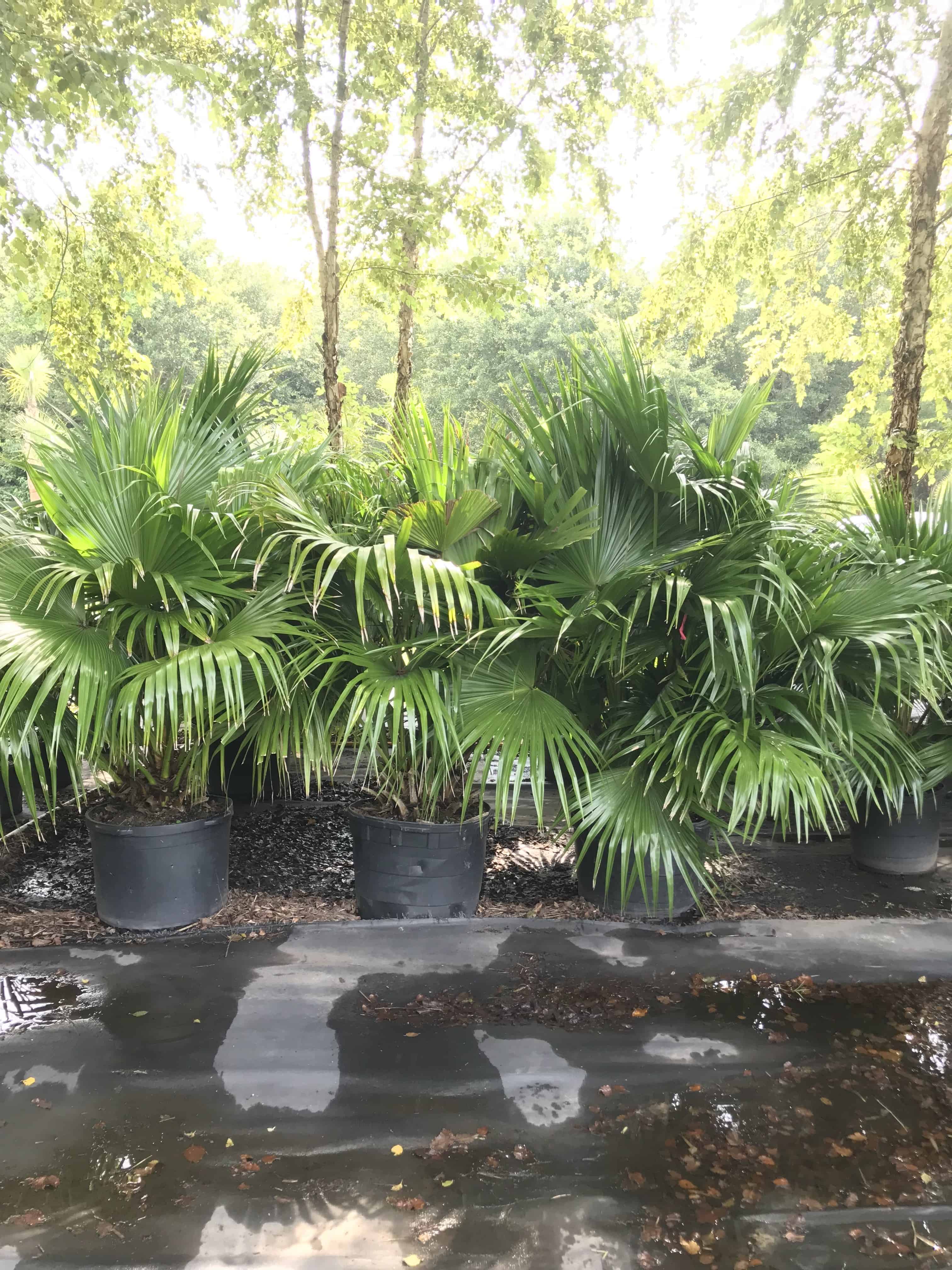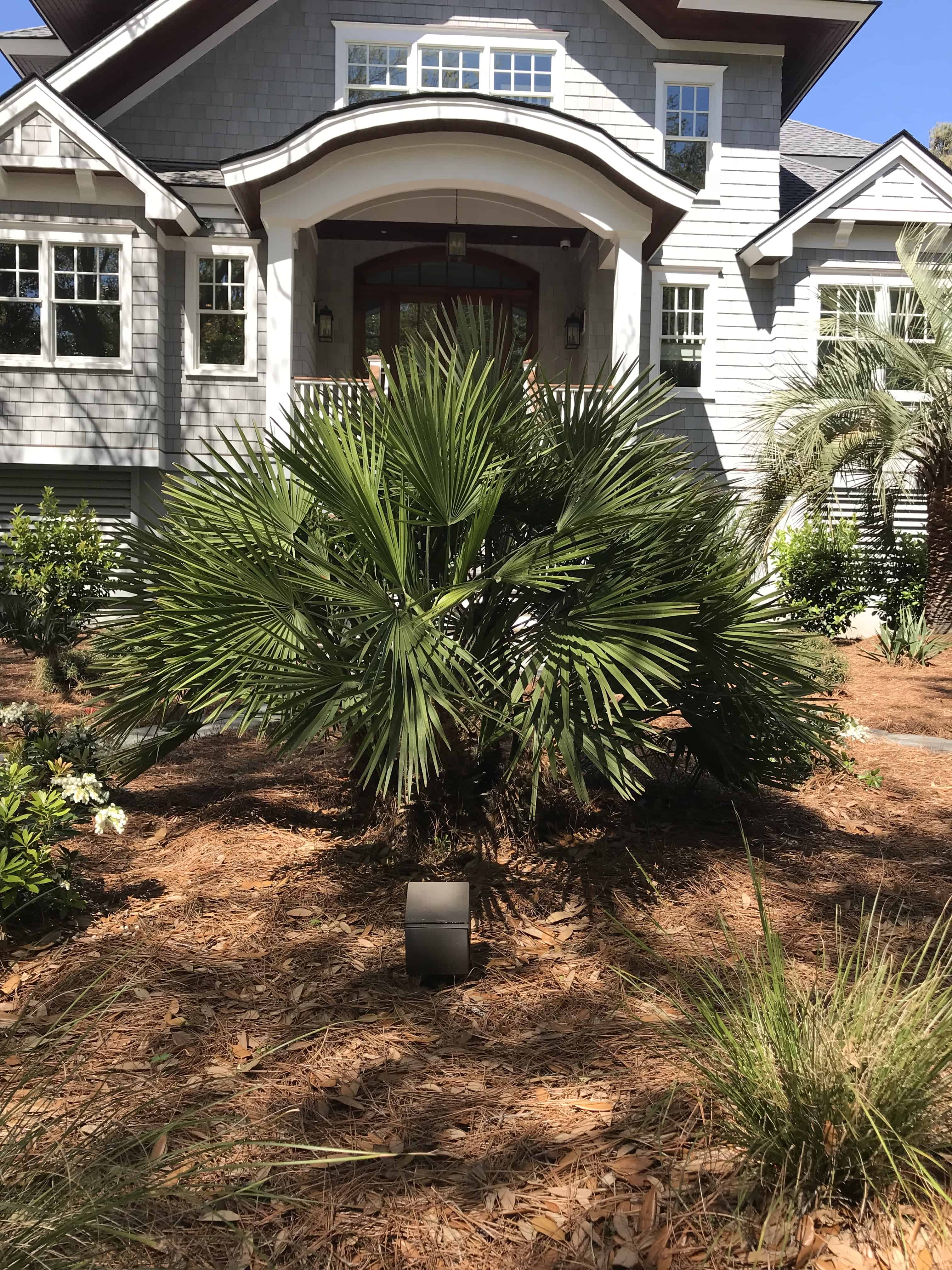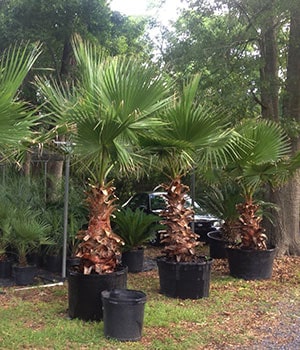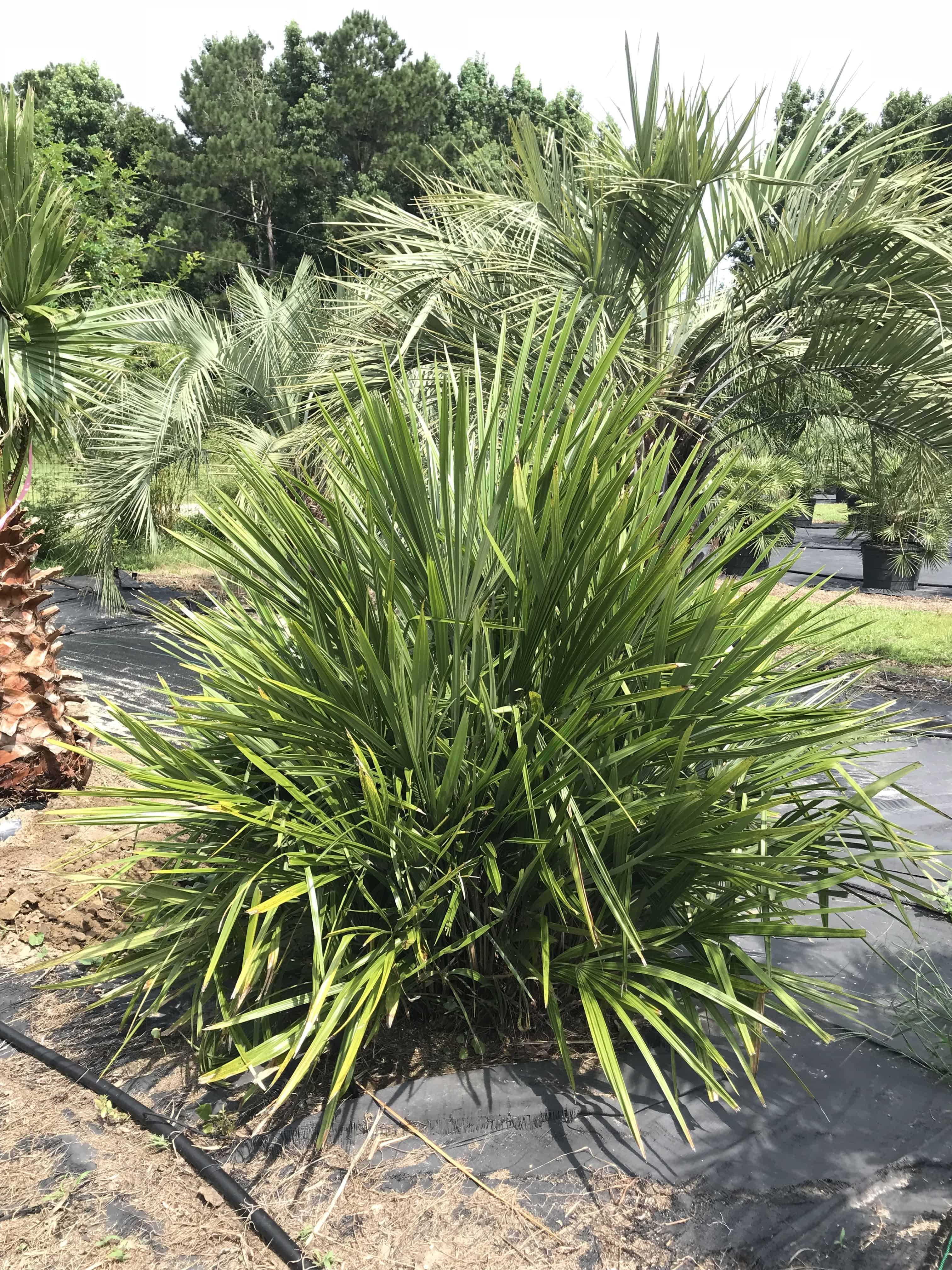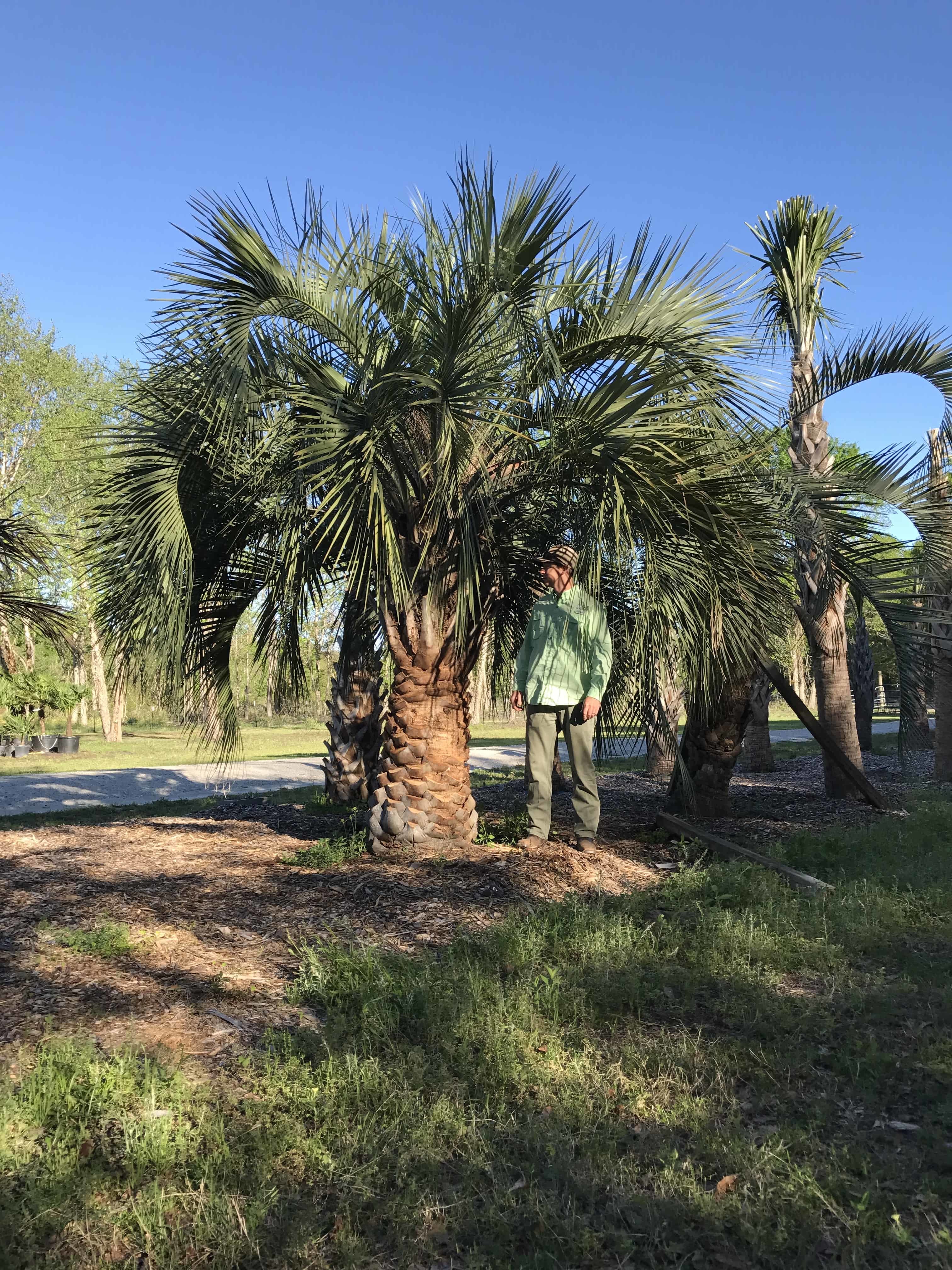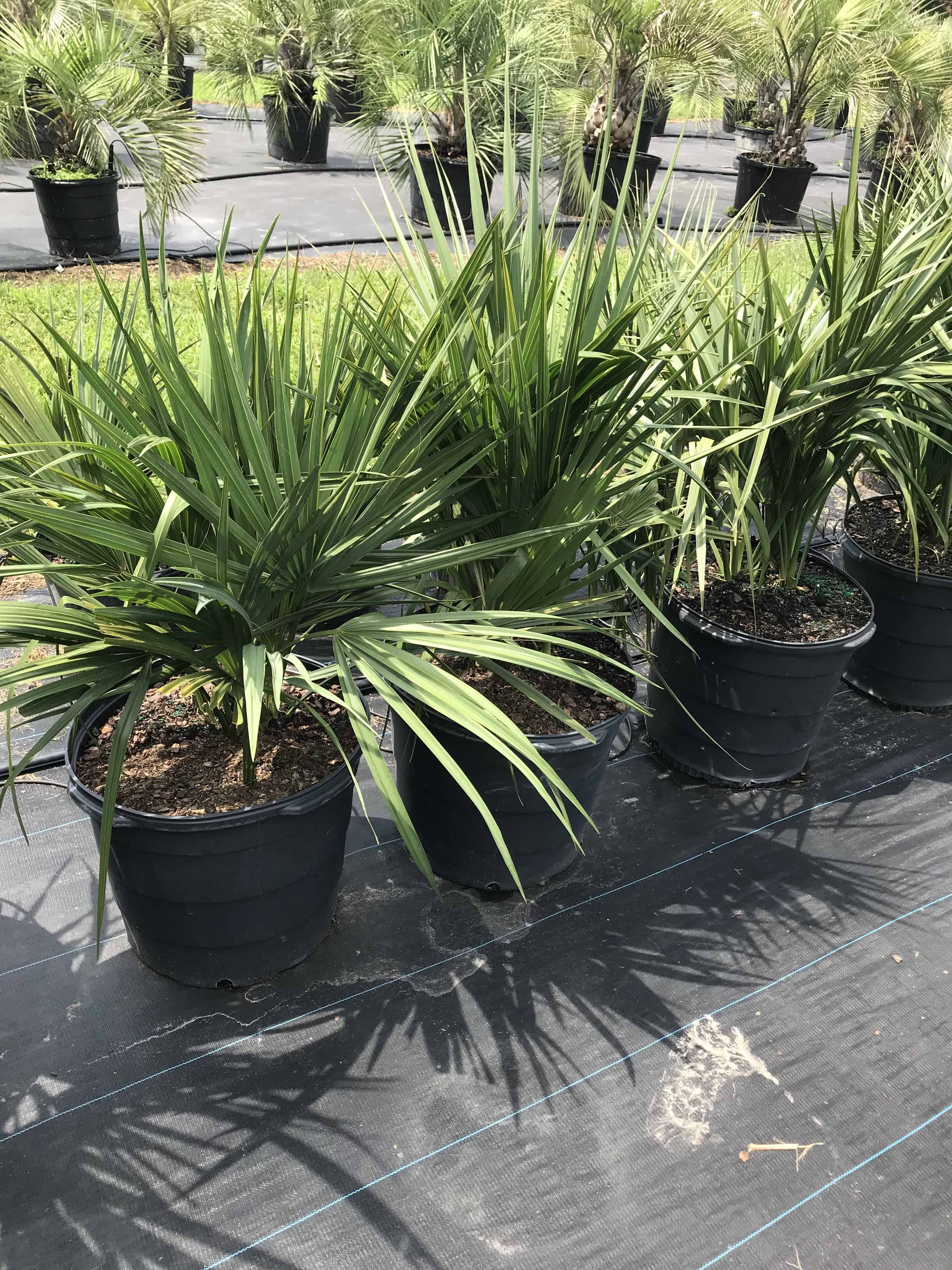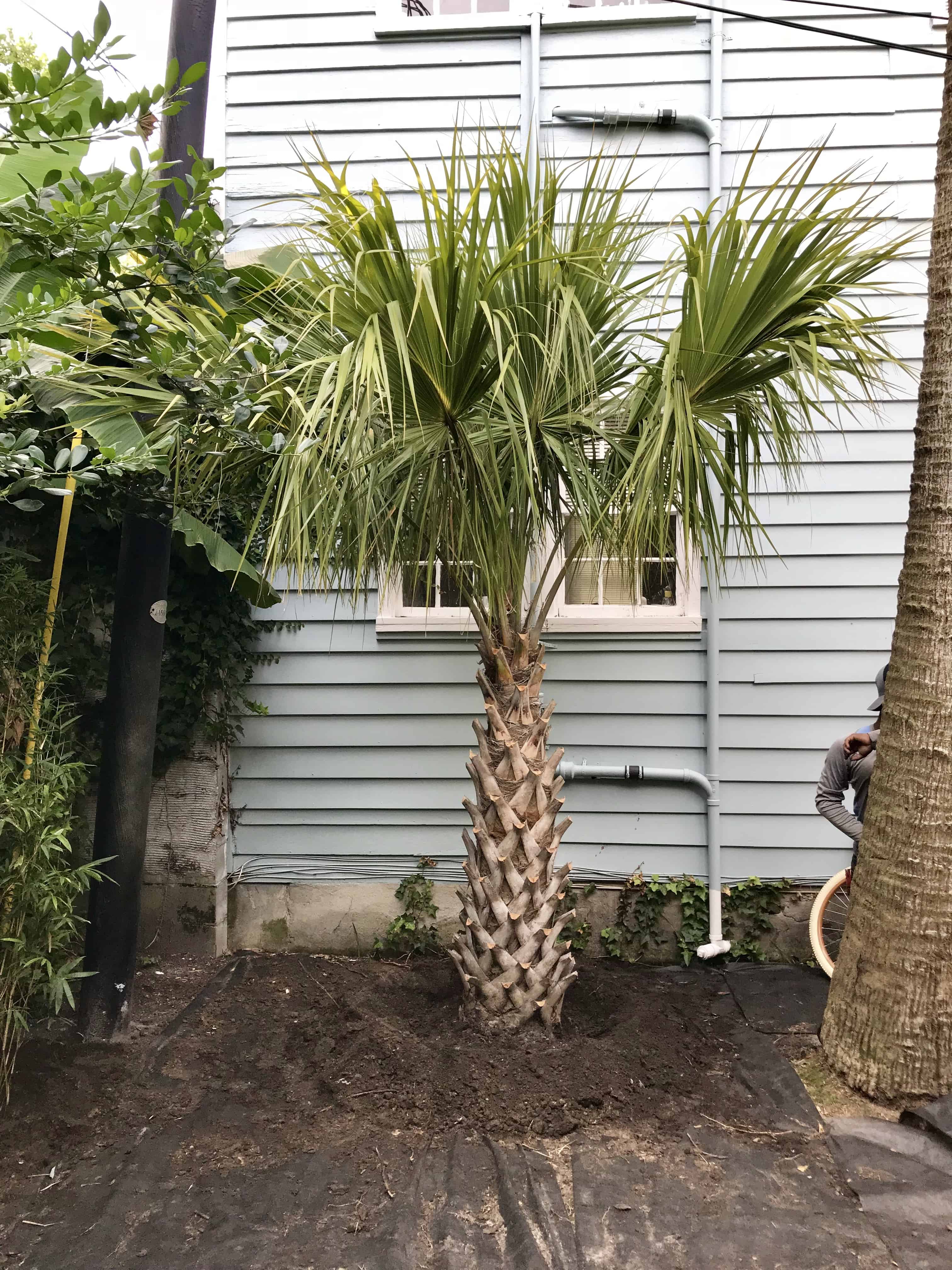Palm Tree Types
Comparing the Different Palm Tree VarietiesWith more than 2,000 varieties of choosing the right palm tree type for your home or business can seem like a daunting task. Fear not! We’ve created a simple rating system that will help you choose the perfect palm tree variety for your next project.
Cold & Hardy’s Palm Tree Rating System
To help you decide which palm tree variety is best for you we’ve developed a simple rating system that ranks each palm type in six different categories. We’ve given each tree type a rating in those six categories that is relative to the other varieties. Before you scroll down take a quick read through our rating system guidelines so you’ll be able to choose the right palm tree variety for your next project.

Charleston Rating
The “Charleston” rating is pretty self-explanatory: how suited is a particular palm variety for the Charleston area. Think of this as a summary score if you live in the Greater Charleston area. The higher the rating the better the easier it will be to maintain and the better it will perform.

Cold HARDINESS
Cold Hardy is our name so rating the different palm varieties by their ability to stand up to cold weather is something we hang our hat on. For this category, we rate the different palm tree types on a sliding scale. If the palm tree is only suitable for tropical climates it will have a lower score. If the species can handle really cold weather then it will have a much higher Cold Hardiness score.

Growth time
That tree might look good in your yard now but what if it triples in size in the first two years? That’s what our Growth Time rating is for. If the tree can reach a mature height in a short amount of time it will have a higher rating here. Note: this isn’t always a good thing as in the case of the Canary Palm which can reach up to 60ft. but grows very slowly. Just watch out for combinations of a high “Full Grown Height” rating and a high (fast) “Growth Time” rating. That can leave your yard biting off a little more tree than it can chew!

Full Grown height
Height at maturity is one of the most important considerations when choosing a palm tree variety for your home. If you have limited space you might need to consider smaller varieties. If you want to add a lot of shade you might want to consider a larger variety. This rating scale is simple, the higher the rating the larger the tree at maturity. Like we mentioned above in the “Growth Time” rating, be careful for fast-growing varieties with a short grow out period.

SUN needed
We get a lot of sun here in the Lowcountry and it can have a big impact on the health of your palm trees. If you have a lot of shade coverage from larger trees or none at all you might be limited in the palm varieties you can use in your project. The rating scale here is pretty simple too: the higher the rating the more sun it needs. Lower ratings can also mean that the species can’t handle a lot of direct sun so make sure you pay close attention with trees with a low sun rating.

water needed
How often you have to water your palm trees can impact the variety you want to use in your project. Go out of town frequently? Don’t have an automated irrigation system? Some of the more fragile palm varieties need a very specific amount of water and are more hands on. The higher the water rating the more water they will need.
Canary Palm (Phoenix canariensis)
Other names: Canary Island Date Palm, Pineapple Palm
About:
The Canary Island Date Palm Tree is one of the most majestic of all palm trees. This sub-tropical palm tree has been grown for exotic landscape for over 200 years.
- Solid choice for Charleston
- Cold Hardy to 15F – 20F
- Extremely Slow (25+ years)
- Very Large (max. 50-60 ft.)
- Needs full sun
- Water weekly
Chinese Fan Palm (Livistona Chinensis)
Other names: Fountain Palm
About:
The Chinese Fan Palm Tree is able to reach 30 feet in Florida but is usually
seen at 15 feet with a 10 to 12-foot spread in Charleston. Chinese Fan Palm Trees can
have a single straight trunk or multiple trunks with large, six-foot-long glossy fronds which have
drooping tips.
- Recommended for Charleston
- Slow
- Max 15 feet
- Shade to partial sun
- Can handle droughts
Mediterranean Fan Palm (Chamaerops Humilis)
Other names: European Fan Palm
About:
The Mediterranean Fan Palm Tree is a small clumping palm with spinney leaf stems. This palm gives a Mediterranean garden appearance that can be planted as a specimen or in a grouping. Planting matching pairs along driveways, walkways, and entry ways can provide a formal element to the garden.
- Works well in Charleston
- Will show damage below 15F
- Very Slow Growing
- 12 feet max
- Handles sun and shade well
- Low water requirements
Mexican Fan Palm (Washingtonia Robusta)
Other names: Mexican Palm
About:
The Mexican Fan Palm Tree is a very fast growing fan palm with bright green leaves.
- Great in groups
- Damage below 25F, quick recovery
- Very Fast Growth
- 30 – 50 ft.
- Needs full sun
- Likes dry climates
Needle Palmetto (Rhapidophyllum Hystrix)
Other names: Needle Palm
About:
The Needle Palm is a clumping palm variety with deep green leaves. This palm is heavily protected with long sharp needles originating from the trunk.
- Good but doesn’t like salt spray
- Can handle up to -5F
- Slow
- 5 – 10 ft. tall and wide
- Handles sun and shade well
- Can handle frequent watering
Pindo Palm (Butia capitata)
Other names: Jelly Palm
About:
Due to its large size and long fronds it makes a nice specimen plant that provides a real tropical look. The hardiest feather palm. The spectacular blue green foliage is the most vibrant in full sun.
- Thrives in the Lowcountry
- Cold Hardy to 5F
- Slow – Moderate
- Up to 20ft.
- Can handle full sun
- Salt water tolerant
Sabal Minor
Other names: Dwarf Palmetto
About:
The Sabal Minor is a short-trunked sabal with much if not all of its trunk below ground. Leaves are green to blue-green in color. This shrub like palm is usually planted in groupings.
- Great Charleston Palm
- Cold Hardy to 0F
- Moderate
- 5 ft. tall and wide
- Likes the sun
- Can handle occasional heavy rain
Palmetto Tree (Sabal palmetto)
Other names: Cabbage Palm, Palmetto, Cabbage Palmetto, Blue Palmetto, Carolina Palmetto, Common Palmetto, Swamp Cabbage
About:
The Sabal Palmetto is the state tree of South Carolina and Florida. It withstands hurricanes better than any other tree.
- Perfect for Charleston
- Cold Hardy to 5F
- Slow
- Normally 30 ft.
- Can handle full sun
- Needs water twice a month
Sago Palm (Cycas revoluta)
Other names: King Sago, Sago Cycad, Japanese Sago
About:
The King Sago Palm Tree is not actually a palm but rather a cycas. It has long dark green feathery leaves.
- Solid choice for Charleston
- Will show damage below 15F
- Very Slow Growing
- 10 ft. tall and wide
- Likes partial shade
- Water weekly
Saw Palmetto (Serenoa Repens)
Other names:
About:
The Saw Palmetto Palm Tree is a low growing fan palm with stiff leaves and spiny stem.
- Works great as ground cover
- Cold Hardy to 0F
- Slow
- 5 – 10 ft. tall and wide
- Likes full sun
- Water 2-3 times per month
Sylvester Date Palm (Phoenix Sylvestris)
Other names: Silver Date Palm, Wild Date Palm
About:
Also known as the “silver” or ‘wild” Date Palm, Phoenix sylvestris, is a beautiful accent palm that blends well into many landscape themes. The trunks are robust and the canopies average 18’ across at maturity.
- Great large palm for Charleston
- Will show damage below 15F
- Fast
- 40-50 ft. tall and 25 ft. wide
- Can handle full sun
- Water frequently after planting
Windmill Palm (Trachycarpus fortunei)
Other names: Chinese Windmill Palm, Chusan Palm
About:
An attractive palm used as a specimen or in a grouping. Prefers adequate water in full sun. In some hotter climates would enjoy afternoon shade although it is not required. Thrives well in upstate South Carolina.
- Best suited for Upstate SC
- Cold Hardy to 0F
- Fast
- Normally 25 ft.
- Likes shade/partial shade
- Needs water twice a month


